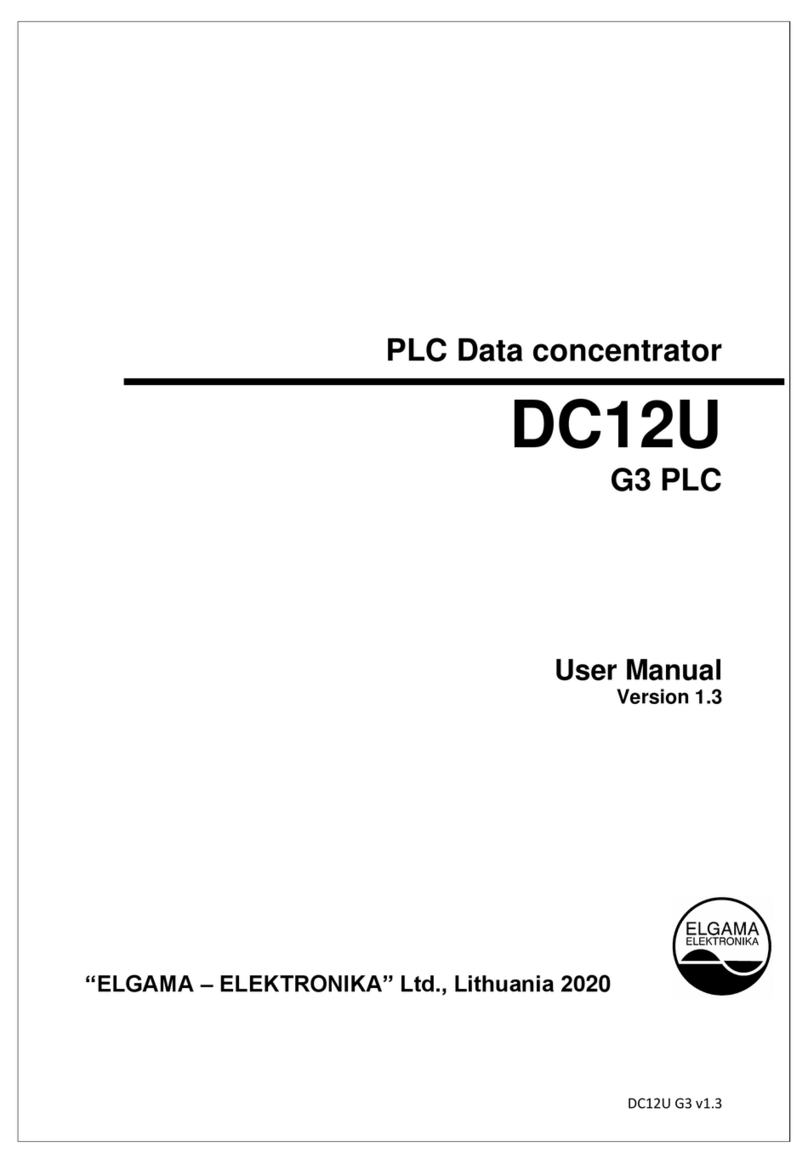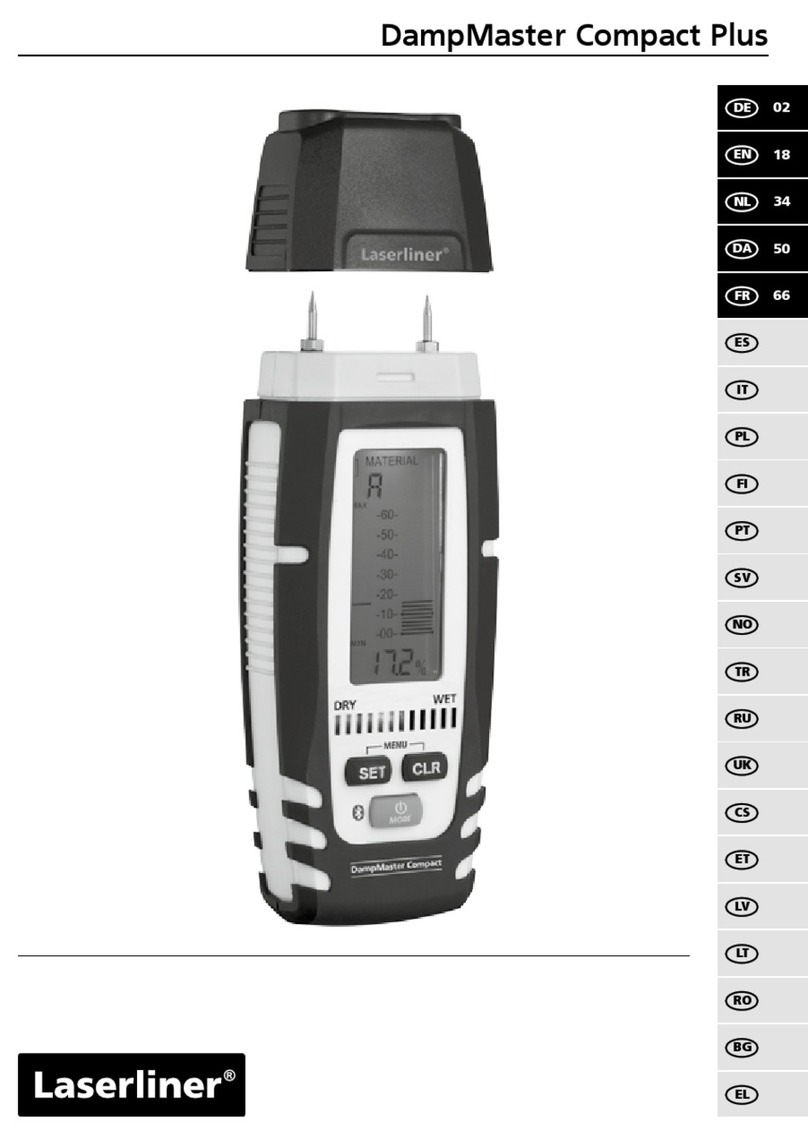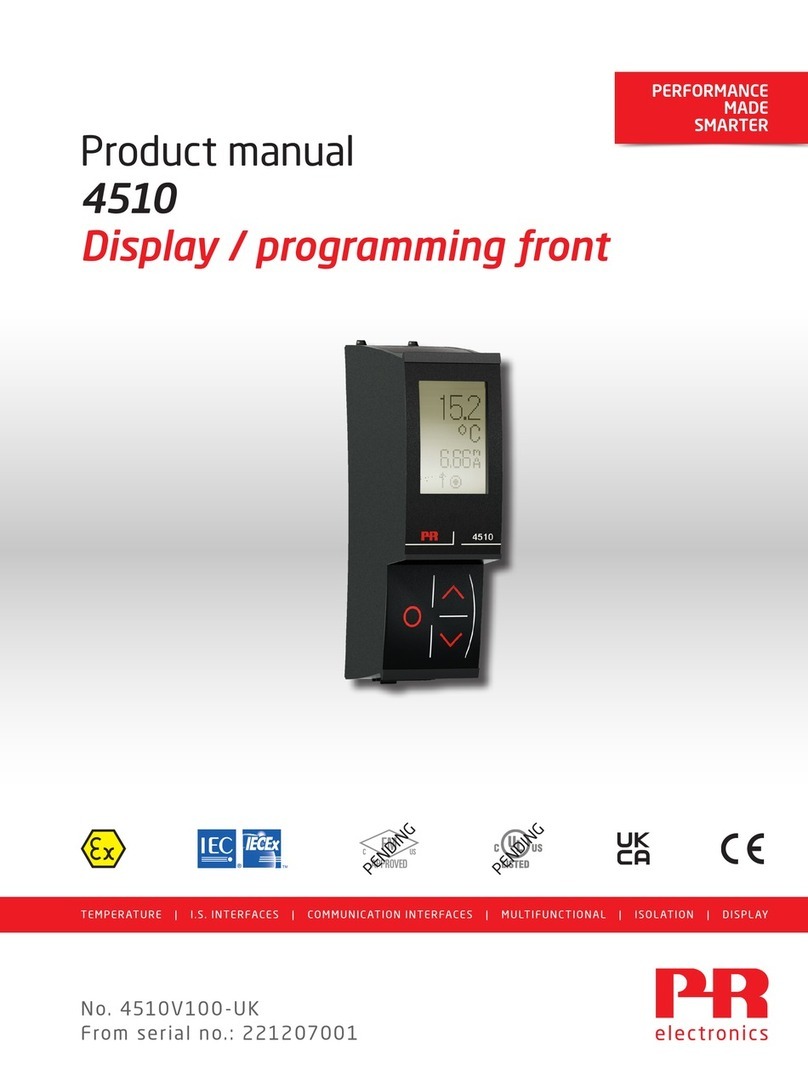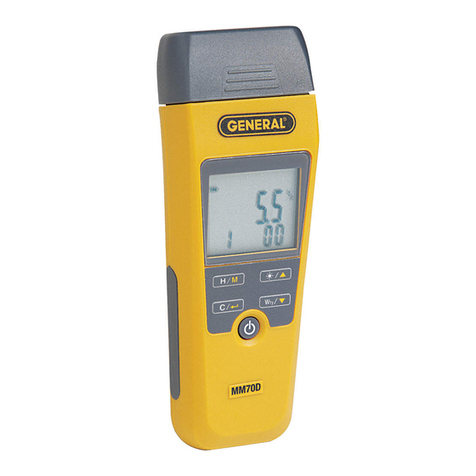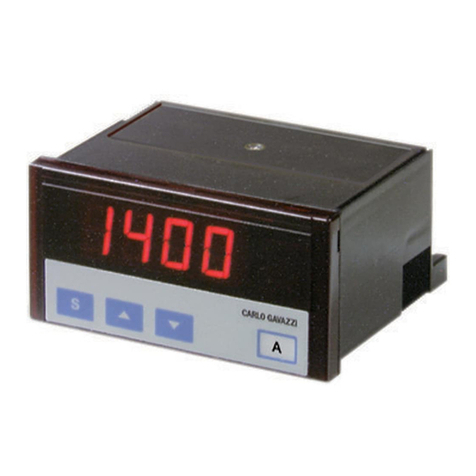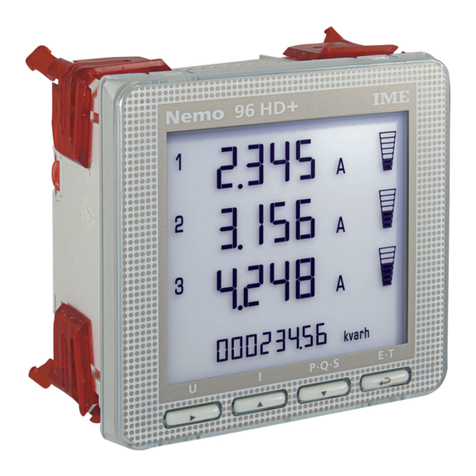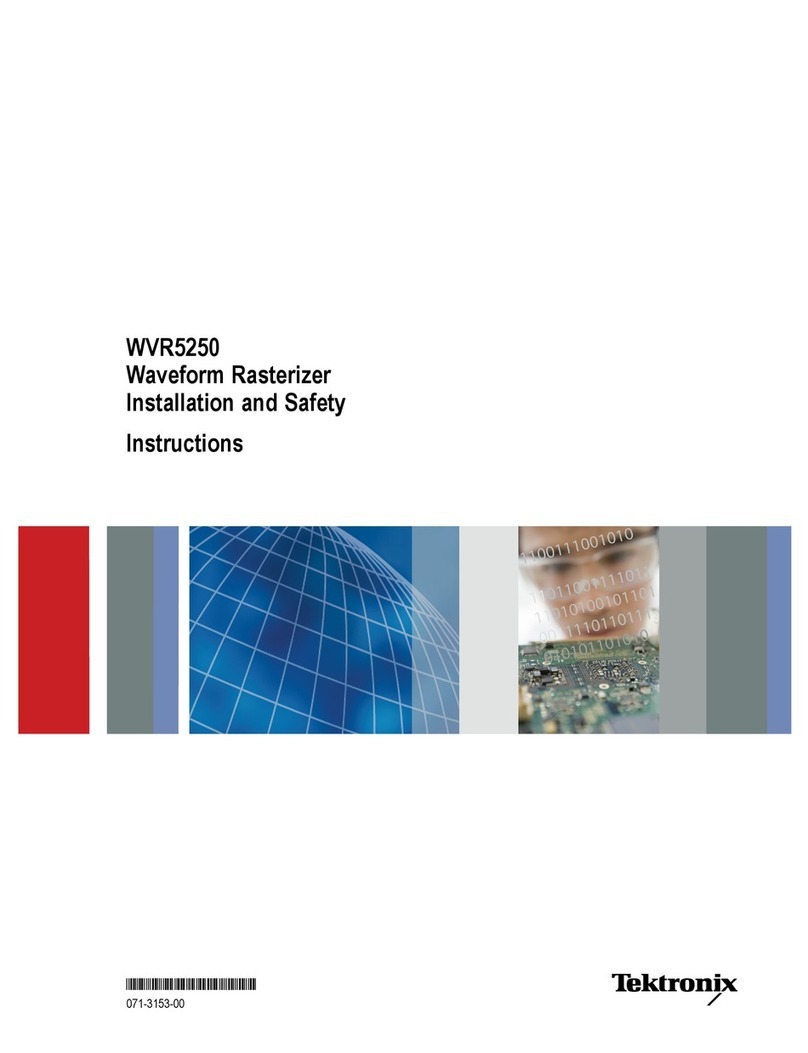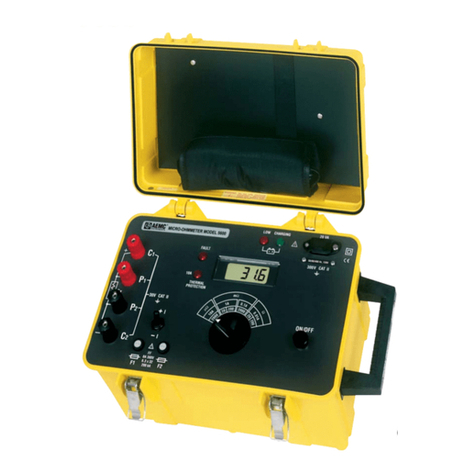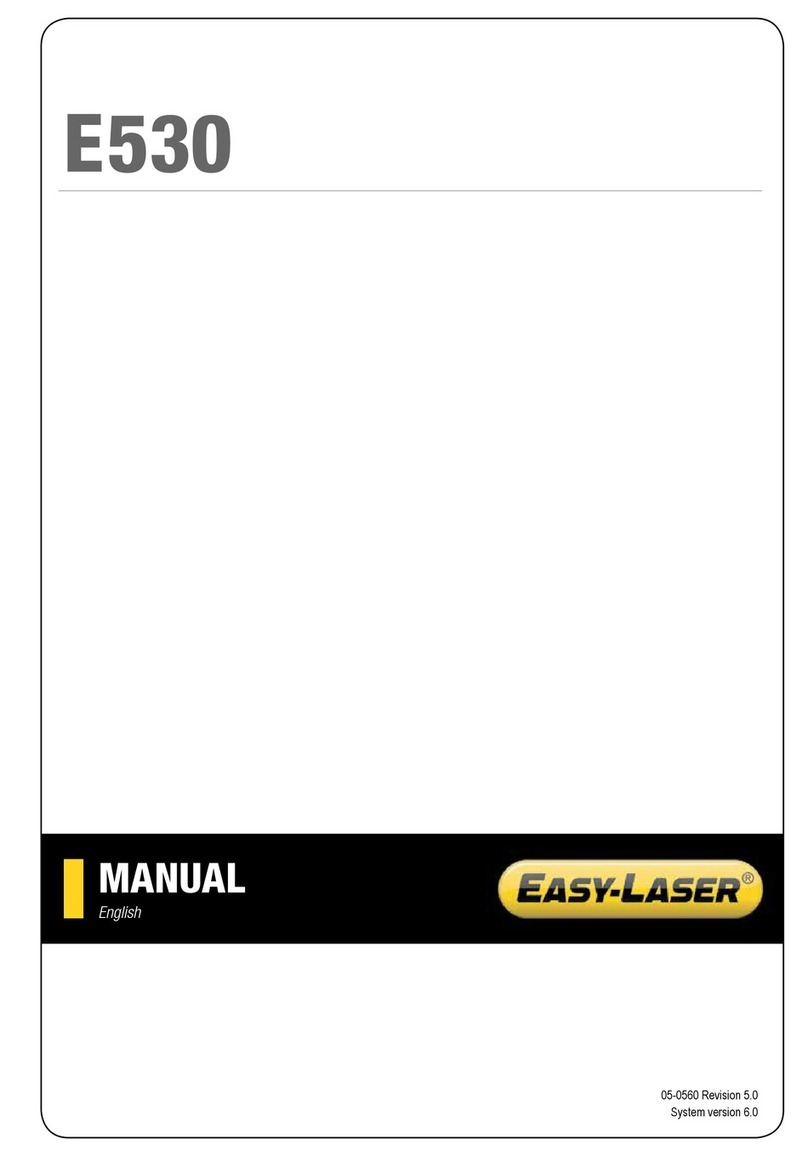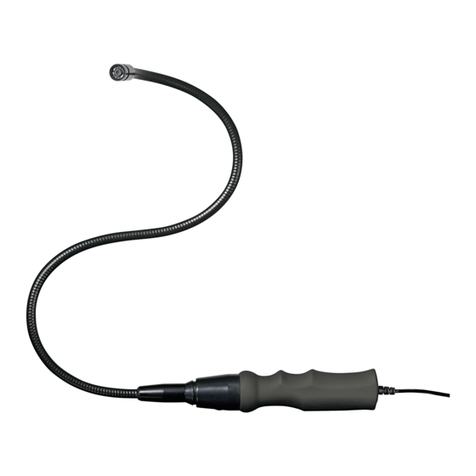Elgama G1B Series User manual

Static electricity meter
GAMA 100
G1B.xxx
User manual
Version 2.3b
(G1BEN23b)
“ELGAMA ELEKTRONIKA” Ltd., Lithuania 2016


“ELGAMA-ELEKTRONIKA”
Static electricity eter
GAMA 100
G1B.xxx
USER MANUAL
"ELGAMA-ELEKTRONIKA" Ltd.
2 Visorių str.
LT-08300 Vilnius
Ph.: +370 5 2375000
Fax: +370 5 2375020
E- ail: info@elga a.eu

REVISION HISTORY
Version Date Co ents
1.0 2010-07-19 First release
1.1 2010-09-20 Infor ation update
1.2 2011-09-01 Description of functional possibility added (Internal ains Relay, Shunt and
RS485 interface)
1.3 2012-01-04 Synchronization of internal clock (RTC) and control algorith of internal
ain relay was added
1.4 2012-05-14 Description of functional possibility added (current easure ent in neutral
and Wired M-Bus interface was added)
1.5 2012-11-12 Control algorith of Internal ain relay by specified ti e and date, and by
current over li it was added. Encryption and Authentication.
2.0 2014-03-07 Description of internal PLC ode and fir ware upgrade functionality was
added.
2.1 2014-04-29 Description of internal PRIME PLC ode ( odification H2) and fir ware
upgrade functionality was added.
2.2 2015-03-04 Tariff progra update. LCD list updated and re oved inaccessible
features. Bi-stable internal relay functionality updated.
2.2a 2015-04-18 New odification of optional LCD was added. Wireless M-Bus was added.
2.2b 2015-08-21 Description of internal PLC ode ( odifications H3, H4), THD
easure ent and Second Load Profile (Network profile) was added
2.3a 2015-08-25 DLMS/COSEM protocol Logical na e (LN) referencing, non-transparent
eter case and Extended LCD was added
2.3b 2016-03-04 Infor ation about power consu ption of eter with external power supply
for ode was added. Bi-stable internal relay functionality updated.
Wireless MBus interface was added. Meter status on LCD update

S
TATIC ELECTRICITY METER
GAMA
100.
U
SER
M
ANUAL
5
Contents
Contents .................................................................................................................................................................. 5
About this docu ent ................................................................................................................................................ 8
1
Safety .............................................................................................................................................................. 8
1.1
Safety require ents ............................................................................................................................... 8
1.2
Transportation and storage rules ........................................................................................................... 8
1.3
Prevention and eli ination of alfunctions............................................................................................ 9
1.3.1
Exterior inspection ............................................................................................................................. 9
1.3.2
Inspection of connection and para etrization constants ................................................................... 9
1.3.3
Procedure of eter returning to anufacturer ................................................................................... 9
1.3.4
Proper disposal of product ................................................................................................................. 9
2
Designation ...................................................................................................................................................10
3
Meter odifications .......................................................................................................................................11
3.1
Modifications ........................................................................................................................................11
3.2
Technical specifications .......................................................................................................................11
4
Functional possibilities ..................................................................................................................................12
4.1
Current, voltage, frequency ..................................................................................................................12
4.2
Additional functions ..............................................................................................................................13
4.3
Sealed button functions ........................................................................................................................13
4.4
Backup power source ...........................................................................................................................14
4.5
Co unication, inputs/outputs ............................................................................................................14
4.6
Voltage and current circuit separation ..................................................................................................15
4.7
Internal bi-stable ains Relay ..............................................................................................................15
4.8
LCD options ..........................................................................................................................................15
4.9
Internal PLC ode ............................................................................................................................15
5
Construction ..................................................................................................................................................16
5.1
Case .....................................................................................................................................................16
5.2
Na eplate ............................................................................................................................................16
5.3
Ter inal block ......................................................................................................................................17
5.4
Operation principle ...............................................................................................................................18
5.4.1
Measure ent odule ......................................................................................................................18
5.4.2
Signal conversion .............................................................................................................................18
5.4.3
Micro-controller ................................................................................................................................18
5.4.4
Non-volatile e ory ........................................................................................................................18
5.5
Display (LCD) .......................................................................................................................................18
5.5.1
Default LCD (Option #1) ..................................................................................................................19
5.5.2
Optional LCD (Option #2) ................................................................................................................20
5.5.3
Extended LCD (Option #3) ...............................................................................................................21
5.6
Internal clock ........................................................................................................................................22
5.6.1
Synchronization of internal clock (RTC) ..........................................................................................22
5.7
Sliding voltage link ................................................................................................................................23
6
Co unication .............................................................................................................................................23
6.1
Optical co unication interface ..........................................................................................................23
6.2
Electrical interface ................................................................................................................................23
6.3
Controller MCL 5.XX with internal GSM/GPRS ode ......................................................................24
6.4
PLC ode .........................................................................................................................................25
6.4.1
Internal PLC ode ........................................................................................................................26
6.5
Wired M-Bus odule ............................................................................................................................26
6.6
Wireless M-Bus interface .....................................................................................................................27
6.7
Plug & Play ...........................................................................................................................................27
6.8
Outputs/Inputs ......................................................................................................................................27
6.8.1
Optical test output (red LED) ...........................................................................................................27
6.8.2
S0 outputs ........................................................................................................................................27
6.8.3
Relay output .....................................................................................................................................27
6.9
Power supply ........................................................................................................................................28
6.9.1
Power supply for external ode ...................................................................................................28
6.10
Push buttons ........................................................................................................................................28
6.10.1
Scroll push button and optical scroll key .....................................................................................28
6.10.2
Sealed push-button .....................................................................................................................29
7
Data registers ................................................................................................................................................29
7.1
Energy registers ...................................................................................................................................29
7.2
De and registers .................................................................................................................................30

6
7.3
Maxi u de and registers .................................................................................................................31
8
Data profiles ..................................................................................................................................................31
8.1
Billing profile .........................................................................................................................................31
8.2
Load profile ...........................................................................................................................................33
8.3
Second load profile ...............................................................................................................................34
8.4
Wired M-Bus load profile ......................................................................................................................34
8.5
Event log...............................................................................................................................................34
8.5.1
Power failure (outage) event log ......................................................................................................35
8.5.2
Voltage swell (over-voltage) event log .............................................................................................35
8.5.3
Voltage sag (under-voltage) event log .............................................................................................35
8.5.4
Event log of internal ains relay ......................................................................................................35
8.5.5
Power over-li it event log ................................................................................................................36
8.5.6
Reverse current flow event log ........................................................................................................36
8.5.7
Over-current event log .....................................................................................................................36
8.5.8
Neutral current balance event log ....................................................................................................37
8.5.9
Magnetic field influence event log ....................................................................................................37
8.5.10
Opening of eter cover event log ...............................................................................................37
8.5.11
Opening of ter inal cover event log ............................................................................................37
8.5.12
Clock change (setting) event log .................................................................................................37
8.5.13
Para eterisation (Para eter change) event log .........................................................................38
8.5.14
Security failure (failed authentication) log ...................................................................................38
8.5.15
Meter (internal) error event log ....................................................................................................39
8.5.16
Tariffs event log ...........................................................................................................................39
8.5.17
Load profiles reset log .................................................................................................................39
8.5.18
Fir ware update event log ..........................................................................................................39
9
Data onitors ................................................................................................................................................39
9.1
De and onitor ...................................................................................................................................39
9.2
Current onitor ....................................................................................................................................40
9.3
Over-voltage onitor ............................................................................................................................41
9.4
Under-voltage onitor ..........................................................................................................................41
10
Tariff progra ................................................................................................................................................42
10.1
Day tariff progra s ...............................................................................................................................42
10.2
Week tariff progra ..............................................................................................................................43
10.3
Tariff seasons .......................................................................................................................................43
10.4
List of special days ...............................................................................................................................43
10.5
“E ergency” tariff .................................................................................................................................44
10.6
Tariff ti ers ..........................................................................................................................................44
11
Data reading ..................................................................................................................................................44
11.1
Reserved-auto atic (RA) display sequence ........................................................................................47
11.2
Main auto atic (MA) display sequence ...............................................................................................48
11.3
Main anual (MM) display sequence ..................................................................................................48
11.4
Indication of abnor al states on LCD ..................................................................................................48
11.4.1
Internal eter errors ....................................................................................................................48
11.5
Data reading via co unication interfaces .........................................................................................49
12
Para etrization .............................................................................................................................................49
13
Data protection ..............................................................................................................................................51
13.1
Physical protection ...............................................................................................................................51
13.2
Software protection ..............................................................................................................................51
13.2.1
Data access security ...................................................................................................................51
13.2.2
Passwords ...................................................................................................................................51
13.2.3
Encryption and Authentication .....................................................................................................52
13.2.4
Fir ware/hardware identifiers .....................................................................................................52
13.2.5
User’s identifiers ..........................................................................................................................52
13.2.6
Blocking of optical co unication interface ...............................................................................52
13.2.7
Para eterization ID .....................................................................................................................53
13.2.8
Event log, security alerts .............................................................................................................53
13.3
Fir ware upgrade ................................................................................................................................53
14
Internal bi-stable ain relay ..........................................................................................................................54
14.1
Action “disconnect by re ote control co and” .................................................................................55
14.2
Action “disconnect by contractual power exceeded” ............................................................................55
14.3
Action “disconnect by phase current li it exceeded” ...........................................................................56
14.4
Action “disconnect by swings of network voltage” ...............................................................................57
14.5
Action “allow to connect by re ote control co and” ........................................................................58

7
14.6
Action “allow to connect by end of billing period” .................................................................................58
14.7
Action “allow to connect by end of event” ............................................................................................59
14.8
Action “connect by Menu button” .........................................................................................................59
14.9
Action “connect by the ains switch of the internal electrical installation” ..........................................59
15
Installation .....................................................................................................................................................60
Annex A. Di ensions of the eter ........................................................................................................................61
Annex B. Screw torques used in G1B eters .......................................................................................................62
Annex C. List of data objects .................................................................................................................................63

8
About this document
This User Manual presents a description of a static electricity eter GAMA 100 (G1B.xxx)
and its instruction. Please read this instruction prior to the use of the eter. The
anufacturer does not give any guaranty in case eter is da aged during the exploitation
that contravenes with the instructions and require ents of safety stated in the anual and
eter passport.
The anufacturer is not responsible for the loss in case the eter is para eterized without
accordance with the instructions and reco endations presented in the software description
as well as with tariff order defined by the State. It does not carry the responsibility for the
unprofessional acts of responsible persons in case of full or partial loss of billing data.
User anual presents the description of all possible characteristics, functions and auxiliary
outputs of electricity eter. A concrete eter ay not co ply with all characteristics
introduced in this anual; however, eter passport defines a precise eter configuration,
possibilities and auxiliary outputs as well as a concrete connection sche e.
The anufacturer has a right to change the infor ation presented in this anual without the
warning. In addition, any copying, trans ission and publication of full or partial eter
docu entation is forbidden without a written per ission of “ELGAMA-ELEKTRONIKA” Ltd.
1 Safety
1.1 Safety requirements
1. Installing, uninstalling, para eterization and verification can be perfor ed only by
authorized organizations that have qualified technicians. Only qualified persons should
install eters.
2. Meter’s connection or disconnection fro network should be done when voltage in the
network is turned off. A protection fro accidental network voltage connection ust be
established.
3. No accessories can be hung on a eter, it is forbidden to hit or strike eter’s case.
4. Precautions ust be taken in battery changing procedure: 1) eter has to be
disconnected fro electricity network, a protection fro accidental network voltage
connection ust be assured; 2) use pincers or si ilar instru ents to change battery
(connection/disconnection of a plug).
1.2 Transportation and storage rules
1. Prior to the usage eter ust be kept in a closed roo in a transportation packing,
where the te perature ranges fro 5°C to 40°C and average area hu idity is up to
80% when te perature being 25°C. The roo ust be without har ful gas or stea .
Meter ust be kept and exploited in pre ises protected fro dust, aggressive vapors
and gas.
2. Unpacked eters can be kept only in repair workshop. The te perature ust range
fro 10°C to 35°C, average area hu idity ust not exceed 80% when te perature
being 25°C.
3. During winterti e eters ust be kept in a heated roo for 6 hours or ore, before
they are used.
4. Meters are to be transported only in closed vehicles (carriage, container, hold). Shake
acceleration is to be up to 30 /s², 80-120 strikes per inute. The te perature ust
range fro -40°C to +70°C, average area hu idity ust not exceed 98% when
te perature being 35°C.

9
1.3 Prevention and elimination of malfunctions
If suspected that eter works i properly, the following actions should be perfor ed:
1.3.1 Exterior inspection
Before applying voltage to the eter akes sure its case has no echanical da ages, there
are no signs of overheating, and all wires are properly connected.
Do not plug a meter into network if it is mechanically damaged. This can cause
staff injuries and destroy meter as well as other equipment!
Before switching on network voltage, it is necessary to check if sliding voltage
link is connected (see chapter 5.7 Sliding voltage link).
1.3.2 Inspection of connection and parametrization constants
Installing, uninstalling, para etrization and verification can be perfor ed only by authorized
organizations that have qualified technicians. After plugging a eter into electric network
technician should check whether date and ti e are correct, whether eter shows right
energy direction, valid tariff ti e zone and calendar, tariff seasons.
1. If eter shows wrong date and ti e, a representative fro the organization in charge of
the eter installation should be infor ed.
2. If LCD indicator shows a warning note ‘Er’, the eter should be uninstalled and passed
for repair works.
3. If energy direction is wrong, technician should check whether inputs are connected
properly to ter inal block.
4. If eter calendar season, season ti e na e or valid tariff ti e zone does not correspond
to real situation, eter’s para eterization data has to be checked and errors has to be
corrected by repeated eter’s para eterization.
1.3.3 Procedure of meter returning to manufacturer
In case alfunctions cannot be eli inated on the spot, the eter should be returned to the
anufacturer for repair or replace ent. Meters on their return to anufacturer ust have
their Passport with notices of organization in charge of their exploitation and short description
of eter’s alfunctioning.
1.3.4 Proper disposal of product
This sign indicates, that this product cannot be thrown out with any other
waste when its validity period is over if this sign is on the product or it is
included in product’s description. In order to prohibit possible har for
environ ent and hu an health because of uncontrolled waste
eli ination, please separate this product fro other for s of waste, and
if it is possible use this product or its parts repeatedly in recycling
process. Ho e users can contact product anufacturer or local
ad inistration for infor ation about product utilization and recycling
without any har to the environ ent. Enterprises ust contact their own
providers to revise product’s validity ter s and conditions stated in
purchase agree ents. This product cannot be thrown out with any other
waste of different kind.

10
2 Designation
The static eter of direct connection GAMA 100 (G1B.xxx) is designated for easure ent of
active or active and reactive electrical energy in alternate current networks. G1B eters can
easure active energy in both directions (+A and –A, as well as |A|) si ultaneously and easure
reactive energy in directions (+R and -R), as well as in four quadrants (R1, R2, R3, R4)
si ultaneously.
G1B.xxx eters can register axi u de and on daily and onthly bases, easure
instantaneous values as well as record load profile and event log.
Meters can be either single-rate or ulti-rate. The rates are controlled by internal real-ti e clock.
G1B.xxx eters have S0 output(s) and optionally can have optical and electrical co unication
interfaces for local and re ote data trans ission.
Meter G1B.xxx confor s to the following require ents of directives and standards:
- Directive 2004/22/EC of the European Parlia ent and of the Council of 31 March 2004 on
easuring instru ents;
- Directive 2004/108/EC of the European Parlia ent and of the Council of 15 Dece ber 2004
on the approxi ation of the laws of the Me ber States relating to electro agnetic
co patibility and repealing Directive 89/336/EEC;
- EN 50470-3:2006 “Electricity etering equip ent (a.c.) – Static eters for active energy
(class indexes A, B and C)”;
- EN 50470-1:2006 “Electricity etering equip ent (a.c.) – General require ents, tests and
test conditions – Metering equip ent (class indexes A, B and C)”;
- IEC 62053-21:2003 “Electricity etering equip ent (a.c.) – Static eters for active energy
(classes 1 and 2)”;
- IEC 62053-23:2003 “Electricity etering equip ent (a.c.) – Static eters for reactive
energy (classes 2 and 3)”;
- IEC 62052-11:2003 “Electricity etering equip ent (a.c.) – General require ents, tests and
test conditions. Part 11: Metering equip ent”;
- IEC 62052-21:2003 “Electricity etering equip ent (a.c.) – General require ents, tests and
test conditions. Part 21: Tariff and load control equip ent”;
- IEC 62054-21:2004 “Electricity etering equip ent (a.c.) – Tariff and load control. Part 21:
Particular require ents for ti e switches”;
- IEC 62056-21:2002 “Electricity etering – Data exchange for eter reading, tariff and load
control. Part 21: Direct local data exchange”;
- IEC 529 “Degrees of protection provided by enclosures”
- IEC 61334-4-41 “Distribution auto ation using distribution line carrier syste s – Part 4:
Data co unication protocols – Distribution line essage specification”
- IEC 62056-46 Data link layer using HDLC protocol;
- IEC 62056-53 DLMS/COSEM Application Layer;
- IEC 62056-61 DLMS/COSEM Obis code;
- IEC 62056-62 DLMS/COSEM Interface Classes.
- EN 13757-2:2005 Co unication syste s for and re ote reading of eters - Part 2:
Physical and link layer;
- EN 13757-3:2005 Co unication syste s for and re ote reading of eters - Part 3:
Dedicated application layer;
- EN 50065-1 Signalling on low-voltage electrical installations in the frequency range 3 kHz to
148,5 kHz -- Part 1: General require ents, frequency bands and electro agnetic
disturbances.
Note: Tables and Figures in this User manual may present measurement values and pulse outputs
in all possible energy and power directions Actual number of measured values and pulse outputs
of a certain meter modification are indicated in meter passport

11
3 Meter modifications
3.1 Modifications
Meter G1B is ulti-tariff eter ( easures active and reactive energy).
Detailed explanation of eter odification is presented in Table 3-1.
Table 3-1 GAMA 100 eter odifications
Type explanation exa ple:
XXX.
G1B.
X
1
X
5
X
2
Construction
G1B (LCD, ulti-tariff, active energy or active and reactive energy, ax de and, extended
functionality) G1B
Accuracy class
A (EN 50470-3), 2.0 (IEC 62053-21) 0
B (EN 50470-3), 1.0 (IEC 62053-21) 1
Measurement circuits
1 ele ents, 2 wire 5
2 ele ents (current easure ent in neutral), 2 wire 6
In/Imax, Iref/Imax
1:8 0
1:10 1
1:12 2
1:16 3
1:20 4
Exa ple: G1B.152 is G1B construction eter that confor s to the require ents of accuracy class B and 1.0. Meter is
designated for easure ent of energy in 2 wire alternate current networks; it has 1 easure ent ele ent. It is direct-
connected eter with axi u current up to 60 A. Ratio of reference current and axi u current is 1:12.
3.2 Technical specifications
Table 3-2 Technical specifications
Accuracy class:
Active energy easure ent
B (EN 50470-3), 1.0 (IEC 62053-21)
Reactive energy easure ent
2.0 (IEC 62053-23)
Reference voltage U
n
, V:
See Table 4-2
Operating voltage range, % from U
n
:
-20... +15
Reference I
ref
(maximum I
max
) current, A:
See Table 3-1 and Table 4-2
Starting current, % from I
ref
:
0,4 (class B)
Reference frequency, Hz:
50
Power consumption, VA:
In voltage circuits <1.0 VA (<0.5 W)
<4.0 VA (<1.3 W) with +5V power
supply for external ode
<10 VA (<1.0 W) with PLC odule
<10 VA (<1.3 W) with PLC and wired
MBus odules
<10 VA (<2.2 W) with PLC and wireless
MBus odules
In current circuits
< 0,05
Meter constant, imp/kWh, imp/kva
rh:
50150000
Internal clock (IEC 62
052
-
21
, IEC 62054
-
21
):
Error < 0,5 s/24 h (T=23°C),
< 0,15 s/°C/24 h
Backup power supply for clock Li-ion battery and/or supercapacitor
Operation duration using only backup power supply (Li-ion battery) > 10 years
Tariff module functions:
Nu ber of energy tariffs Progra able (T1 T6)
“E ergency” tariff Progra able (T1 T6)
Nu ber of axi u de and tariffs Progra able (M1 M6)
Data storage duration when voltage disconnected >20 years
S0 outputs (IEC 62053
-
31):
Nu ber 1
Output constant, i p/kWh (i p/kvarh) 50150000

12
Pulse duration, s 30
Relay output:
Progra able (1 2)
Maxi u co utation voltage, V 250
Maxi u co utation current, A 120
Internal mains relay:
Bi-stable Option #1 Option #2 Option #3
Max switching current (I ax)
Max switching voltage (115% Uno )
Max switching power (1.15×Uno ×I ax)
Mechanical endurance
Electrical endurance
≤ 40A
≤265 V
≤10,6 kW
1×10
5
5×10
3
≤ 80A
≤265 V
≤21,2 kW
1×10
5
5×10
3
≤ 100A
≤265 V
≤26,5 kW
1×10
5
5×10
3
Communication interfaces:
Optical interface IEC 62056-21, DLMS/COSEM
Electrical interface – CL (20 A current loop)
IEC 62056-21, DLMS/COSEM
RS485 IEC 62056-21, DLMS/COSEM
Wired M-Bus/ Wireless M-Bus EN 13757-2; EN 13757-3
PLC EN 50065-1 (CENELEC A (3–95 kHz))
Isolation:
Pulse voltage tests (IEC 60060-1) 6 kV (1,2/50 µs)
Alternating voltage tests 4 kV @ 50 Hz, 1 inute
Magnetic field sensiti
vity
I unity against per anent agnetic fields
I unity against electro agnetic HF fields
> 3.5 T
≤ 300 T (current sensor – shunt)
≤ 30 V/ (80 - 2000 MHz)
Protection against dust and water
IP53 default
IP54 (optional)
Temperature range:
Operation:
For eters with battery and for eters without power backup source
For eters with supercapacitor
- 40 +70°C (3K7)
- 25 +70°C
Storage, transportation: - 40 +70°C
Mass, kg:
< 0,9
Dimensions, mm
with usual ter inal cover
with special ter inal cover for GSM/GPRS ode
180 x 130 x 65 (see Figure A-0-1)
200 x 130 x 80 (see Figure A-0-2)
Average service life
16 years
4 Functional possibilities
G1B eters can have different functional possibilities which are described below.
Table 4-1 Ordering code
Section No.
Code:
X
X
X.
FXX.
BX.
PX.
CXXX.
VX.
RX.
LX.
HX
1
Reference current
See chapter 4.1
Reference voltage
See chapter 4.1
Reference frequency
See chapter 4.1
2
F
-
additional Functions
See chapter 4.2
3
B
-
sealed Button functions
See chapter 4.3
4
P
-
backup Power source
See chapter 4.4
5
C
-
Communication, I/O
See chapter 4.5
6
V
-
voltage and current circuit separation
See chapter 4.6
7
R
-
internal main relay
See chapter 4.7
8
L
-
LCD options
See chapter 4.8
9
H
internal PLC modem
See chapter 4.9
4.1 Current, voltage, frequency
G1B eters ay differ in current, voltage and frequency. Choices are denoted with the first three
digits in ordering code and are listed in Table 4-2.
Table 4-2 Possible code choices for current, voltage and frequency
No.
Code:
X
X
X.
Section 1
Reference current
5 A 2
10 A 3
Reference voltage
100 V, 120 V, 127 V 1
220 V, 230 V, 240 V 2
Reference frequency
50 Hz 0

13
4.2 Additional functions
Along with unidirectional and bidirectional active energies, G1B eters ay easure reactive
energy and axi u de and, store registers of up to 16 billing periods in billing profile, easure
instantaneous values and record load profile. Choices for energy easure ent and progra able
functions are denoted with letter “F” and two digits in ordering code and are listed in Table 4-3.
Table 4-3 Possible code choices for energy easure ent, instantaneous values and load profiles
No.
F
-
Energy measurement, instantaneous values, loa
d profiles
Code:
FX
X.
Section 2
Energy measurement
Billing and load profile, instantaneous values and axi u de and
F3
Billing and load profile, instantaneous values and axi u de and, reactive energy
F4
DLMS/COSEM protocol
Short na e (SN) referencing
-
Logical na e (LN) referencing
8
Table 4-4 List of instantaneous values.
12.7.0 Instantaneous RMS voltage (V)
11.7.0 Instantaneous RMS current (A) in phase
15.7.0 Instantaneous active power |P| (kW)
16.7.0 Instantaneous active power ±P (kW)
3.7.0 Instantaneous reactive power +Q (kvar)
4.7.0 Instantaneous reactive power –Q (kvar)
13.7.0 cos ϕ
14.7.0 Frequency (Hz)
91.7.0 Instantaneous RMS current (A) in neutral
12.7.124 Instantaneous THD for voltage
11.7.124 Instantaneous THD for current
Har onics analysis is perfor ed by using a digital band-pass filter, tuned to 50 Hz (narrow band).
Total Har onic Distortion (THD) for current and voltage is calculated by for ulas:
2
22
NB
NBWB
I
I
II
THD −
=
2
22
NB
NBWB
U
U
UU
THD −
=
I
WB
– RMS value of current, easured in wide frequency band;
I
NB
– RMS value of current, easured in narrow frequency band (50 Hz);
U
WB
– RMS value of voltage, easured in wide frequency band;
U
NB
– RMS value of voltage, easured in narrow frequency band (50 Hz).
The sa ple rate is Fs = 2184.53 Hz (32768 Hz/15).
Wide band RMS values are easured up to 21st har onics (21 × 50 Hz = 1050 Hz).
Maxi u de and registration is explained in chapter 7.3. For ore infor ation about billing
profile refer to chapter 8.1. List of easured instantaneous values is presented in Table 4-4.
Instantaneous data can be readout via all available co unication interfaces.
Please note: eters that do not contain reactive energy registers (Code F3), do not easure
instantaneous reactive power, as well as power factor cos(φ). For ore infor ation about load
profile refer to chapter 8.2.
4.3 Sealed button functions
G1B eters ay have sealed button, which ay perfor one of the functions described below.
Choices of sealed button functions are denoted with letter “B” and one digit in ordering code and
are listed in Table 4-5. More about button functions in chapter 6.10.2.
Table 4-5 Possible code choices for sealed button functions
No.
B
-
sealed Button functions
Code:
BX.
Section 3
Without -
Billing period reset B1
Co unication unblock for para eterization B2
Billing period reset and co unication unblock for para eterization B4

14
4.4 Backup power source
G1B eters ay have different backup power sources. Backup power source choices are denoted
with letter “P” and one digit in ordering code and are listed in Table 4-6.
Table 4-6 Possible code choices for backup power source
No.
P
-
backup Power source
Code:
PX.
Section 4 Without
-
Supercapacitor
P1
Unchangeable battery
P2
Changeable battery P3
Changeable battery and supercapacitor P4
Unchangeable battery and supercapacitor P5
Unchangeable battery is ounted on the top right corner of the PCB. Changeable battery is
ounted on the top right corner of the eter under the sealable battery cover and under silicone
protection. Battery cover with sealing option is available on the top right corner of both eters with
changeable and with unchangeable eter. Sealed button is placed under the cover. It is
accessible only when battery cover is opened.
Changing of battery:
• Ensure conditions for eter LCD to be turned-off (do not push scroll button or do not allow
to pass light to optical scroll key);
• Open changeable battery cover and re ove silicone protection;
• Make ready new battery for old battery’s replace ent;
• Disconnect old battery’s connector, re ove the battery;
• Place new battery into old one’s location and connect plug to the corresponding eter
socket;
• Put in silicone protection and close the battery cover;
• After pushing scroll button, eter ust display data. Appearance of data is a sign of correct
battery changing process.
4.5 Communication, inputs/outputs
G1B eters ay have optical (see chapter 6.1) and electrical interfaces (see chapter 6.2). Meters ay
have S0 outputs for trans ission of infor ation about easured energy (see chapter 6.8.2). G1B
eters ay also have relay output (see chapter 6.8.3). Choices of co unications, inputs/outputs are
denoted with letter “C” and three digits in ordering code and are listed in Table 4-7.
Table 4-7 Possible code choices for co unications, inputs/outputs
No.
C
-
Communication, I/O
Code:
CX
X
X.
Section 5
Optical and
electrical interfaces
Without interfaces C0
Optical interface C1
Optical and 20 A “current loop” interface C2
Optical and RS485 interface C3
Optical, RS485 and M-Bus C6
Optical, M-Bus and RS485 (PLC duplication) C7
Optical and wireless M-Bus (868 MHz) C9
Optical and wireless M-Bus (169 MHz) CA
Optical and USB host CB
Outputs/inputs
Without 0
S0 out (A) 1
Control outputs
Without
0
Relay output 1
Two relay outputs 2

15
4.6 Voltage and current circuit separation
G1B eters ay be anufactured with or without voltage and current circuit separation. Choices
of circuit separation denoted with letter “V” and one digit in ordering code and are listed in Table
4-8.
Table 4-8 Possible code choices for circuit separation
No.
V
-
voltage and current circuit separation
Code:
V
X.
Section 6 The voltage and current circuits separated by sliding voltage link -
The voltage and current circuit not separated V1
4.7 Internal bi-stable mains Relay
G1B eters ay be anufactured with or without internal ains relays. Choices of internal ains
relay are denoted with letter “R” and one digit in ordering code and are listed in Table 4-9. More
infor ation about internal ain relay is in chapter 14.
Table 4-9 Possible code choices for internal ain relay
No.
R
-
internal bi
-
stable mains relay
Code:
RX.
Section 7 Without relay -
With relay R1
4.8 LCD options
G1B eters ay be anufactured with or without function of LCD backlight. Backlight of LCD can
be switched on and turned off by locally and re otely. Choices of LCD options are denoted with
letter “L” and one digit in ordering code and are listed in Table 4-10. Optional LCD display supports
indication of up to 6 (six) tariffs. Extended LCD displays OBIS code by eans of 6 sy bols, while
default LCD and optional LCD possess only 4 sy bols for LCD (see chapter Error! Reference
source not found.).
Table 4-10. Possible code choices for LCD options
No.
L
-
LCD options
Code:
LX.
Section 8 (LCD Option #1) Default LCD (4 tariffs, 4 sy bols for OBIS code) -
(LCD Option #1) Default LCD with backlight L1
(LCD Option #2) Optional LCD (6 tariffs, 4 sy bols for OBIS code) L2
(LCD Option #2) Optional LCD with backlight L3
(LCD Option #3) Extended LCD (4 tariffs, 6 sy bols for OBIS code) L4
(LCD Option #3) Extended LCD with backlight L5
4.9 Internal PLC modem
G1B eters ay be anufactured with or without internal PLC ode . Choices of internal PLC
ode are denoted by letter “H” and one digit in ordering code, and are listed in Table 4-11. See
chapter 6.4 for further details.
Table 4-11. Possible code choices for internal PLC ode
No.
H
Internal PLC modem
Code:
HX
Section 9 Without internal PLC ode -
With internal PLC ode (DCSK odulation) H1
With internal PLC ode (PRIME) H2
With internal PLC ode (PRIME) and RS485 (PLC duplication) H3
With internal PLC ode (G3) and RS485 (PLC duplication) H4
NOTE: If an option with character “-” is chosen, that function will not be included in the ordering
code

16
5 Construction
5.1 Case
Meter case, fixing holes and ter inal block confor to the require ents of standard DIN 43857.
Meter case can be ade fro transparent highly echanically resistant and fire retardant
insulation aterial – polycarbonate, stabilized by ultraviolet rays or olded of non-transparent
polycarbonate with transparent polycarbonate windows for LCD, optical interface and optical test
output. It protects eter interior parts and its na eplate. Main cover (transparent and non-
transparent parts of ain cover) is fixed to the base by two sealing screws. Re oval of ain cover
of ounted eter could be done only after ter inal cover re oval. An option of special sealing
bolts preventing disasse ble of eter is available. Ter inal cover is fastened with 1 sealing screw
(suspended seal). Access to the ter inals without ter inal cover re oval is excluded.
This affords
additional level of security to the custo er. Ter inal cover has a hole for threading sealing wire to
sealing screw. The possibility to touch the eter ter inals with sealing wire while sealing the
ter inal cover is prevented.
Figure (See Figure 5-1) presents eter exterior parts and allot ent of control ele ents. For case
di ensions and allot ent of fixing holes see Figure A-0-1.
There is a liquid crystal display (LCD), optical co unication interface, optical scroll key for
display control, sealable and not sealable buttons on the ain cover of the eter. See chapter 11
for the explanation of display control co ands, and chapter 6.10 for the description of push
buttons.
Table 5-1 Explanation of Figure
1
Optical Interface
6
LCD
2
Optical test output [i p/kWh]
7
Na eplate
3
Scroll push-button or Multifunctional (two-position) button
8
Changeable battery cover
4
Sealing screws of ain cover and ter inal cover
9
Sealed push-button
5
Eyelet
10
Status indicator (LED) of internal ains relay
Figure 5-1 G1B eter exterior view with transparent cover Figure 5-2 G1B eter exterior view with non-transparent cover
5.2 Nameplate
Na eplate for eter, with transparent cover, is printed on plates ade of PET aterial during the
eter anufacturing process. This ensures that all arks and inscription are clear, non-erasable

17
and non-transferable. Na eplate for eters with non-transferable cover is arked on the non-
transparent part of ain cover by eans of laser arking technology during the eter
anufacturing process. This ensures that all arks and inscription are clear, non-erasable and
non-transferable.
The na eplate bears all the necessary infor ation according to EN 50470-1 and Directive
2004/22/EC, as well as identification of ain data, displayed on LCD. Exa ple of na eplate is
provided in Figure 5-3. Meter serial nu ber is displayed as barcode (by default, barcode type
Interleaved 2/5). Additional QR (DataMatrix) code which contains the eter technical infor ation is
printed on the na eplate.
Figure 5-3 G1B eter na eplate
Table 5-2 Explanation of Figure 5-3
1 Meter fa ily (Ga a 100) 10 The nu ber of phases and the nu ber of wires
(graphical sy bols given in EN 62053-52)
2 Meter LCD 11 The sign of protective class II
3 The eter constant (i p/kWh) 12 Notification of LCD seg ents (refer to chapter
Error!
Reference source not found.)
4 Approval ark (nu ber of the EC design exa ination
certificate)
13 The confor ity arking “CE” and “M”, nu ber of
notified body
5 Reference voltage, current easuring range, reference
frequency
14 The class index of the eter
6 Connection diagra or explanation of OBIS codes 15 QR code (contains the eter technical infor ation)
7 Meter type 16 Ordering code and barcode
8 The environ ental class 17 The serial nu ber, fir ware version
9 DLMS logo 18 Place and year of anufacture
5.3 Terminal block
The ter inal block with all eter connections is situated behind the ter inal cover. Ter inal block
ade fro highly echanically resistant and fire retardant insulation aterial and confor to the
require ents of standard DIN 43857. One utility seal in the fixing screw of the ter inal cover
prevent unauthorized access to the phase connections and therefore also prevent unrecorded
energy consu ption.
Current and voltage ter inals can be ade of zinc-plated iron or nickel-plated brass (copper) and
it provides the ability to add copper or alu iniu wires without oxidation process. Ter inal
assures the sa e quality of the contact irrespective of the shape of the connection conductor (a
co pact wire, a stranded wire, greater or s aller cross-sections).

18
Current ter inals for current up to 100 A are with 9 hole dia eter and wires cross sectional
area at 2.5
2
to 60
2
.
Figure 5-4 Meter ter inal block (wires cross sectional area at 2.5
2
to 60
2
)
5.4 Operation principle
5.4.1 Measurement module
In easure ent odule, current and voltage values of each phase are transfor ed into
proportionally analogous signals.
Precise current transfor ers, shunts or di/dt current sensors are used for current easure ent in
phase circuit. In case eter contains two easure ent ele ents (i.e. type G1B.x6x carries out
current easure ent in neutral as well), current easure ent in neutral circuit is based on
different type of current sensor (current transfor ers or shunts). For voltage easure ent,
resistant voltage dividers are e ployed.
5.4.2 Signal conversion
Analogous signals are transfor ed into digital codes by three-channel Sig a - Delta converter.
Digital signal processor (DSP) calculates average power values P(t) and Q(t), as well as
instantaneous RMS values of current and voltage. Further ore, DSP outputs values of RMS
current in neutral and electricity network frequency.
5.4.3 Micro-controller
By integrating power values, icro-controller accu ulates i port and export energy values.
Energy values are registered to corresponding energy and de and tariff registers in accordance
with the valid tariff progra .
Further ore icro-controller controls liquid crystal display, co unication interface, eter
outputs, tariff progra and internal clock.
5.4.4 Non-volatile memory
G1B eters contain non-volatile flash e ory of different capacity (2048 kB). Flash e ory is
used for data profiles and para eter storage. Me ory retains data for 20 years and ore.
5.5 Display (LCD)
Ga a 100 eters are provided with a liquid crystal display (LCD). The display can be provided
with backlight for easier reading (read chapter 4.8). LCD backlight ay be configured (only by
anufacturer) for one of two work odes and can work per anently or can be switched on by

19
pressing one of the buttons and is extinguished auto atically after a short ti e if no further button
is pressed. LCD backlight can be switched on and turned off locally or re otely.
Default liquid crystal display of G1B eter contains 115 controlled seg ents ( arked in dark
colour in Figure 5-5 - Figure 5-7). Vertical di ension of ain digits is 10 .
LCD displays
ajority of data accu ulated in eter and para eterization constants.
LCD divided into 7 infor ation fields which description is not changeable and
status indication
fields (▼).
An arrow sy bols
(▼)
are an additional status indication for load, billing reset block, fraud,
alar , etc. The arrow points to a status description on the na eplate and can be allocated in
different positions for eters with default LCD (
option #1), optional LCD (option #2), and
extended LCD (option #3).
5.5.1 Default LCD (Option #1)
LCD supports indication of up to four tariffs and four sy bols for OBIS code (Figure 5-5).
Figure 5-5. Seg ents and fields of default G1B liquid crystal display
1. Battery state indicator. The sy bol appears if the voltage of battery is to low and warns
when battery has to be replaced;
2. Index field. Identifies easured data code (OBIS* code). Explanation of OBIS codes (for
basic data) can be printed on eter’s na eplate;
3. Communication indicator. Indicates when co unication operates via optical or electrical
co unication interface;
4. Main value field. Shows the easured value (up to 8 digit values are displayed);
5. Tariff field (T1 T2 T3 T4). Shows current energy tariff (only one seg ent is turned on). Lit
seg ent indicates active energy tariff, blinking seg ent indicates active e ergency tariff for
energy;
6. Internal fault field (Err). Shows when internal eter error occurs;
7. Measurement unit. Shows units of easured value kW(h), kvar(h), VA, V, A, Hz;
8. Alarm (!).Warns if a contractual power li it is exceeded or neutral current i balance
(sy bol “!” is printed on the na eplate under corresponding seg ent);
9. Billing period reset (B). Warns about the availability to re-reset billing period. Seg ent is
not lit – anual billing period reset is available; seg ent is lit – influence by agnetic field is
registered, seg ent is blinking – Billing period was just reset recently and sealed push-
button is currently blocked for so e ti e period (sy bol “B” is printed on the na eplate
under corresponding seg ent).

20
10. Reactive demand (╪). Seg ent is lit in case of reactive load (±Q). Seg ent is not lit in
case there is no reactive load (sy bol “╪” is printed on the na eplate under corresponding
seg ent).
11. Active demand (~). Seg ent is lit in case of positive active load (+P). Seg ent blinks in
case of negative active load (-P). Seg ent is not lit in case there is no active load (sy bol
“~” is printed on the na eplate under corresponding seg ent);
12. Fraud (A). Warns if either ain cover or ter inal cover was opened (sy bol “A” is printed
on the na eplate under corresponding seg ent);
13. Reserved.
14. Reserved.
5.5.2 Optional LCD (Option #2)
LCD supports indication of up to four tariffs and six sy bols for OBIS code (Figure 5-6).
Figure 5-6. Seg ents and fields of optional G1B liquid crystal display
1. Battery state indicator. The sy bol appears if the voltage of battery is to low and warns
when battery has to be replaced;
2. Index field. Identifies easured data code (OBIS* code). Explanation of OBIS codes (for
basic data) can be printed on eter’s na eplate;
3. Communication indicator. Indicates when co unication operates via optical or electrical
co unication interface;
4. Main value field. Shows the easured value (up to 8 digit values are displayed);
5. Tariff field (T1 T2 T3 T4). Shows current energy tariff (only one seg ent is turned on). Lit
seg ent indicates active energy tariff, blinking seg ent indicates active e ergency tariff for
energy;
6. Internal fault field (Err). Shows when internal eter error occurs;
7. Measurement unit. Shows units of easured value kW(h), kvar(h), VA, V, A, Hz;
8. Alarm (!).Show wen influence by agnetic field is registered (sy bol “!” is printed on the
na eplate under corresponding seg ent);
9. Billing period reset (B). Warns about the availability to re-reset billing period. Seg ent is
not lit – anual billing period reset is available; seg ent is blinking – Billing period was just
reset recently and sealed push-button is currently blocked for so e ti e period (sy bol “B”
is printed on the na eplate under corresponding seg ent);
10. Reactive demand (╪). Seg ent is lit in case of reactive load (±Q). Seg ent is not lit in
case there is no reactive load (sy bol “╪” is printed on the na eplate under corresponding
seg ent);
This manual suits for next models
1
Table of contents
Other Elgama Measuring Instrument manuals
Popular Measuring Instrument manuals by other brands
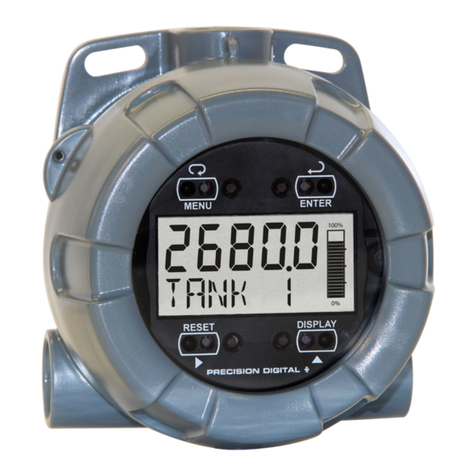
Precision Digital Corporation
Precision Digital Corporation vantageview PD6700-0L1 instruction manual
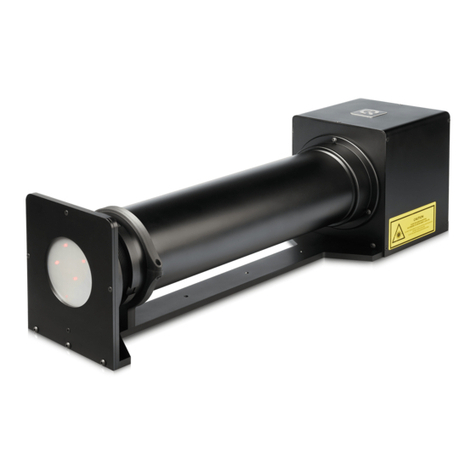
Image Engineering
Image Engineering GEOCAL user manual
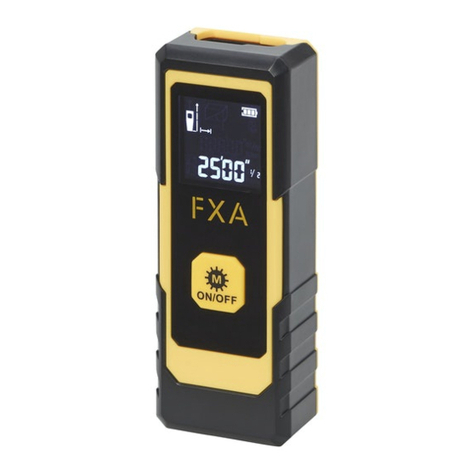
FXA
FXA FXAD560-20M instruction manual

Milwaukee
Milwaukee M12 CLLP-301C Original instructions
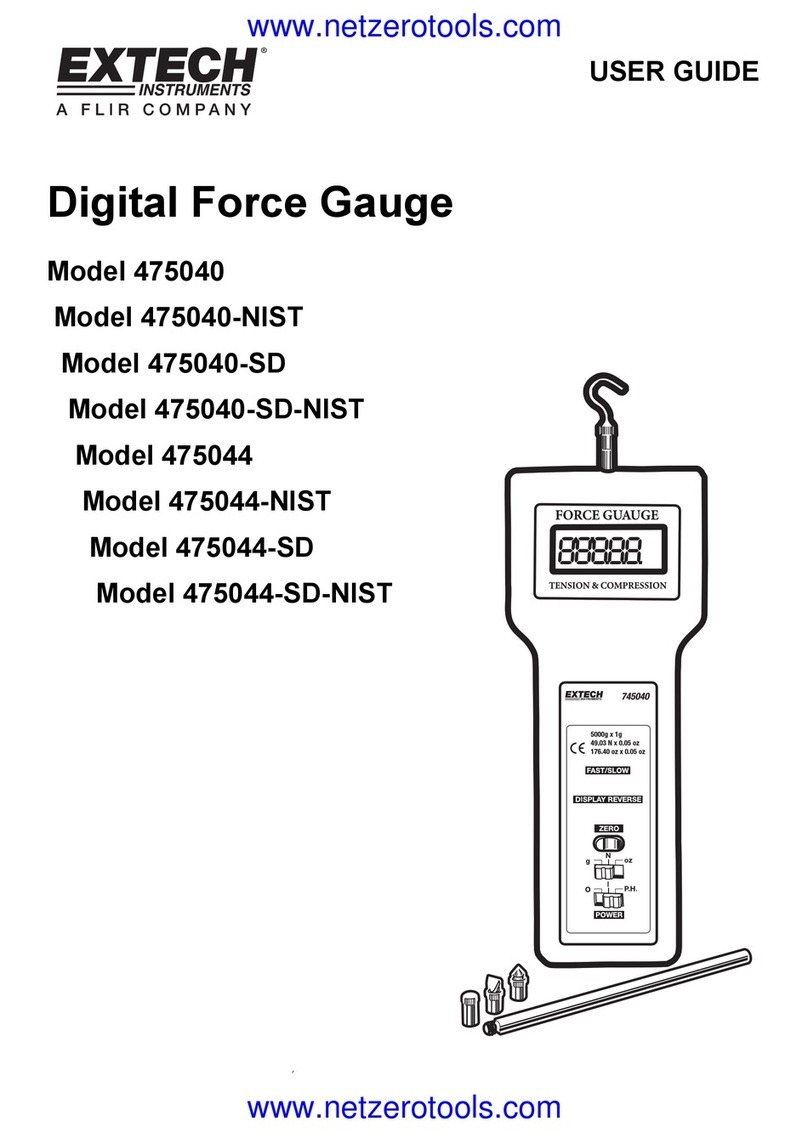
Extech Instruments
Extech Instruments 475040-SD user guide
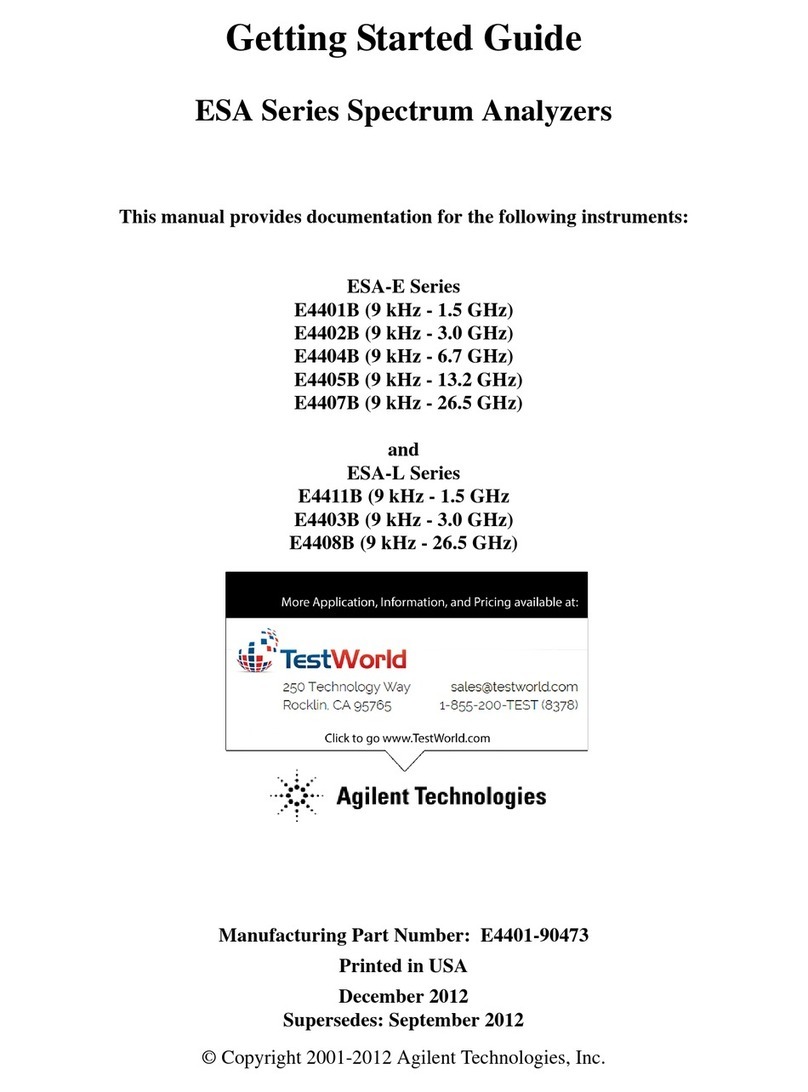
Agilent Technologies
Agilent Technologies ESA Series Getting started guide
